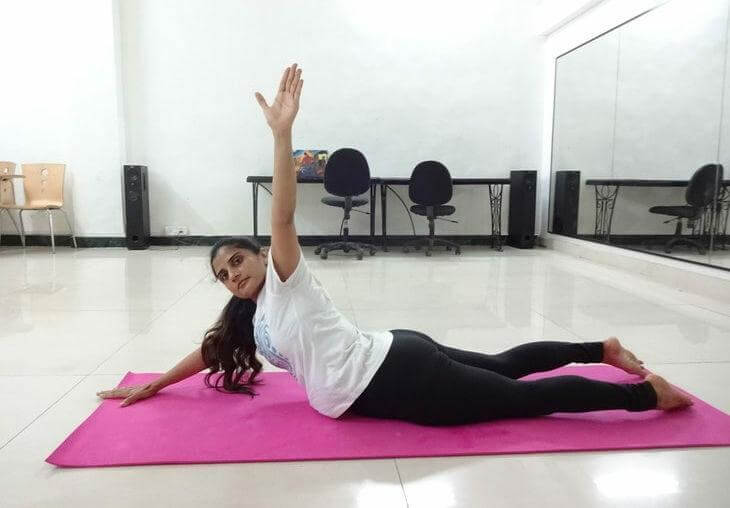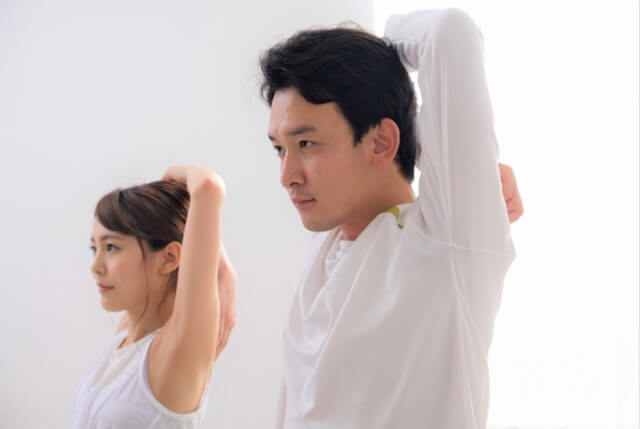Author: Randeep Singh / go to all articles on Yoga cure
Yoga for Shoulders:
Shoulder is the part of the body where the upper limbs, arms, join with the torso.
The ability of the arms to move freely in a wide range of directions, is due to the presence of a highly mobile ball and socket joint at the shoulders.
The rounded head of the humerus, upper arm bone, which represent the ball perfectly fits into the socket like formation present in the shoulder blade, scapula, on each side of the torso for the humans. Yoga for shoulders is designed to exercise this joint.
The sliding surfaces of this joint are covered with hyaline cartilage. The circular edge of the socket at the scapula is lined, and deepened with rim made of muscle fibers, and cartilage called the glenoid labrum.
Being a synovial joint the surfaces which move against each other while producing the movement in it remains well lubricated, with fluid secreted within it, for minimizing the friction involved. Nature has compromised on the stability for giving extra mobility to the shoulder joint.
Four strong muscles – supraspinatus, infraspinatus, subscapularis, and teres minor – which originate on the scapula weave around the shoulder joint before inserting into the humerus via equally strong tendons. The strength in their tendons stabilize the joint as the four muscles swing the shoulder joint to its limits. Deltoid muscle situated on top of these four muscles help pull the arm up (abduction) as it contracts.
The group of muscles present in the anterior of the shoulder joint – Coracobrachialis, serratus anterior, pectoralis major, and minor – work in tandem to pull the shoulder forward, towards the sternum. Latissimus dorsi, and teres major are the muscles located in the upper back which help pull the shoulder blades towards each other posteriorly.
A lot of mental stress finds rest within the shoulders, anyone who experiences persistent stress has stiff shoulders leading to shoulder pain. It has also been found that the shoulder stress increases with the enhancement in one’s responsibilities as one age.
Shoulders are present in the vicinity of the vishuddhi chakra, throat chakra, which governs the ability to let go, or shed one’s attachments. Stiffness in the shoulders cause imbalance in the energy associated with this chakra.
An imbalanced throat chakra makes letting go off one’s attachments challenging. An individual who carries a negative attitude in general has that negative energy stashed within the shoulders, rendering them stiff and painful to move.
Strong and wide shoulders are a hallmark of masculinity, though narrower female shoulders need to be equally strong in order to cope with day to day activities. The emotion of feeling undervalued is strongly related to the shoulders, being unable to reach ones’ physical potential, speed up the physical task, in any activity causes shoulders to store the related stress. Firm, healthy and developed shoulders, in males, lightly held backwards project a good look of the body to the observer.
Visibly large shoulders also convey aggressive and dominating behavior on the part of the bearer. In quadrupedal, four legged animals, the shoulders positioned over the front legs are the main fulcrum around which the rest of the skeletal, body parts appear hinged on to.
Release the Shoulder Stiffness with Yoga
A lot of neck and back problems are somewhere linked to tight shoulders, a majority of the times tight shoulders are the result of sitting at the desk for long hours in a wrong posture. Yoga poses for opening the shoulders help lengthen the shorter, weaker muscles and impart strength to them.

It would be interesting to observe at least for one day that how many times done really uses one’s shoulder muscles, especially if one has a desk job; in a normal day’s routine one hardly lift, rotate, or does anything that stretches the arms causing the shoulder muscles to work.
At the most one lifts the hand and the lower arm thus, while attempting to drink something in the entire day. This leaves the muscles associated with the shoulder movements shorter, and weaker leading to discomforting pain. Shoulder exercises for correcting one’s posture strengthen the muscles around the shoulders to keep the shoulder pulled slightly backward, while keeping the spine straight, positioning the shoulders in this manner helps maintain the health of the neck, back, and of course the shoulders.
Yoga asana for shoulder pain include asana which apply the entire body weight on to the shoulders. This can be done in a supine position by either lifting the entire body over the shoulders, or raising just the hips high enough to press the torso backwards on to the shoulders.
Both these movements provide isometric tension to the shoulders which when released relieves the shoulders of any trapped stress. Frozen shoulder exercises, a important part of yoga for seniors, are a set of yoga poses which help stretch the frozen, restricted muscles of the shoulder joint for increasing its range of motion.
Lifting the arms over the head multiple times every day keeps the deltoids strong and flexible along with providing an invigorating stretch to the muscles of the chest, and the abdomen. Practicing deltoid workouts with yoga is the best mode for maintaining the strength, and agility in the arms. Yoga for tight shoulders also involve shoulder workout which rotates the shoulder joint to its maximum possible range of motion.
Best Yoga Stretches for the Shoulders
Other Informative Articles….

